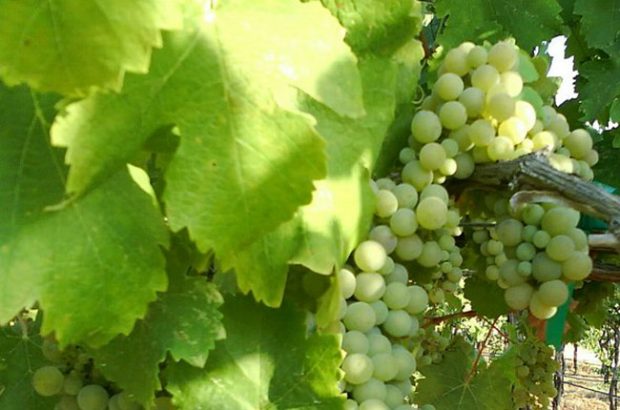 There are thousands of grape varieties that get made into wine, but a well-known few dominate the market: for white wines, Chardonnay, Riesling, Sauvignon blanc, and Pinot Grigio are the ones most of us could name and expect to recognize on a label.
There are thousands of grape varieties that get made into wine, but a well-known few dominate the market: for white wines, Chardonnay, Riesling, Sauvignon blanc, and Pinot Grigio are the ones most of us could name and expect to recognize on a label.
But every now and then some rare variety rockets out of obscurity to grab a share of the limelight and the marketplace. One such making its move today is Viognier, a rare white grape from France’s northern Rhone River valley, suddenly appearing in Australia, the Languedoc in southern France, and here at home in Ontario. And its sudden popularity comes with a dramatic drop in price.
Viognier for years grew exclusively in the little enclave of Condrieu, a tiny appellation near the top of the Rhone valley, just south of Côte Rôtie. Barely 300 acres (125 hectares) on the rocky slopes above the little town of Condrieu is the only source of this rare white wine. (Note that in Europe it is common for the wine to be named for its location, rather than its grape variety, so here the grape Viognier is made into the wine Condrieu.)
Coming from such a small source, the amount of Condrieu produced has always been miniscule, its prices commensurately high, and its reputation restricted to that small band of connoisseurs who discovered its enticements. While Condrieu is dry, its opulent flavours of pear, pineapple and tropical fruits give it such luscious weight in the mouth that it can seem almost sweet. Genuine Condrieu today sells for $70 to $150 per bottle, and at the very heart of the Condrieu appellation lies Chateau Grillet, a natural amphitheatre with its own appellation, just 9 acres, the smallest in France. Last month, Chateau Grillet was available from the LCBO’s Classics Catalogue for $550 per bottle, and sold out instantly. Such is the price of fame combined with rarity!
With growing fame and that kind of money on the table, it is no surprise that growers around the world have decided to get in on the action surrounding this trendy grape. Of course, these new sources cannot use the name Condrieu, so they sell their wines under the name of the grape, Viognier, at a fraction of the price of the original.
But does lower price mean better value? I caught up with the musical Cosbey family taking a break from rehearsing their August Chamber Music Festival, to taste some of the new offerings alongside the archetype: Yalumba Viognier from Australia, $13.95; Laroche Viognier de la Chevalier from Languedoc, $13.05; Redstone Viognier from Ontario, $19.95 and Domaine du Chêne Condrieu, $74.00.
The Aussie was light and fresh, pleasant but fading to insignificance when compared with the others; the Laroche from Languedoc was somewhat fruitier, but had a mustiness that detracted from its appeal. There was ultimately no question: the Condrieu was the classiest, most savoury wine on the table, with greatest complexity, enticing aromas, intriguing exotic fruit flavours, great elegance and a long sweet finish. But our very own Niagara Redstone Viognier came a close second, and as a $20 bargain, more of us are likely to try this competitive rival as a light aperitif or for al fresco luncheons on the patio.
Condrieu the town merits a stopover; wines always taste best closest to home. There you can find the best of Côte Rôtie, the greatest Rhone red (see Bayview Fall 2016) to follow its finest white in the splendid dining room of the Hôtel Beau Rivage – and after such a dinner it’s just a short walk up to bed!
First published in Bayview Magazine, Thunder Bay, Canada
